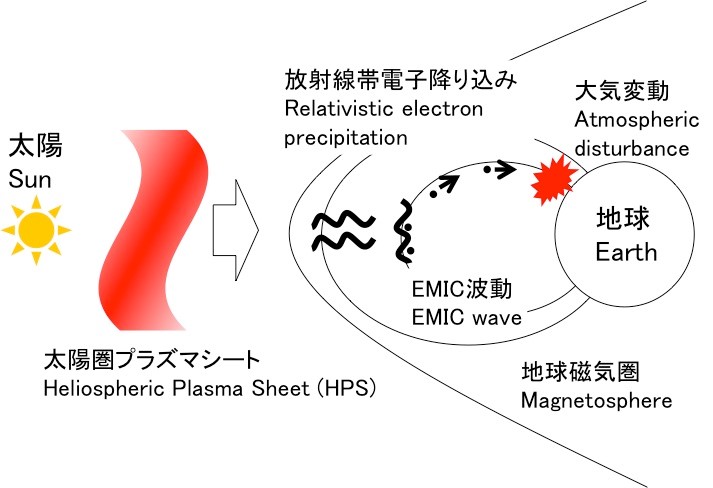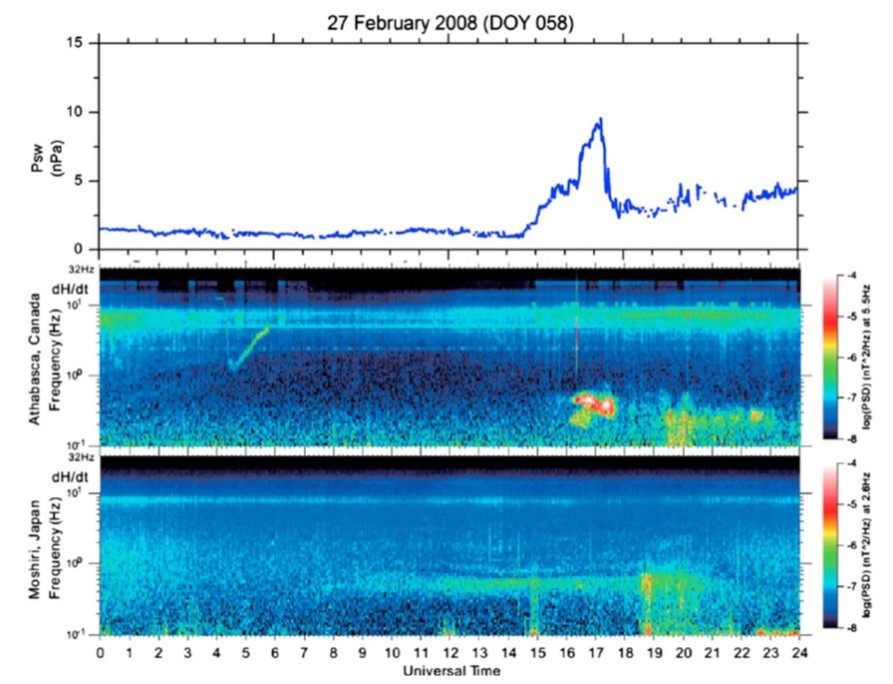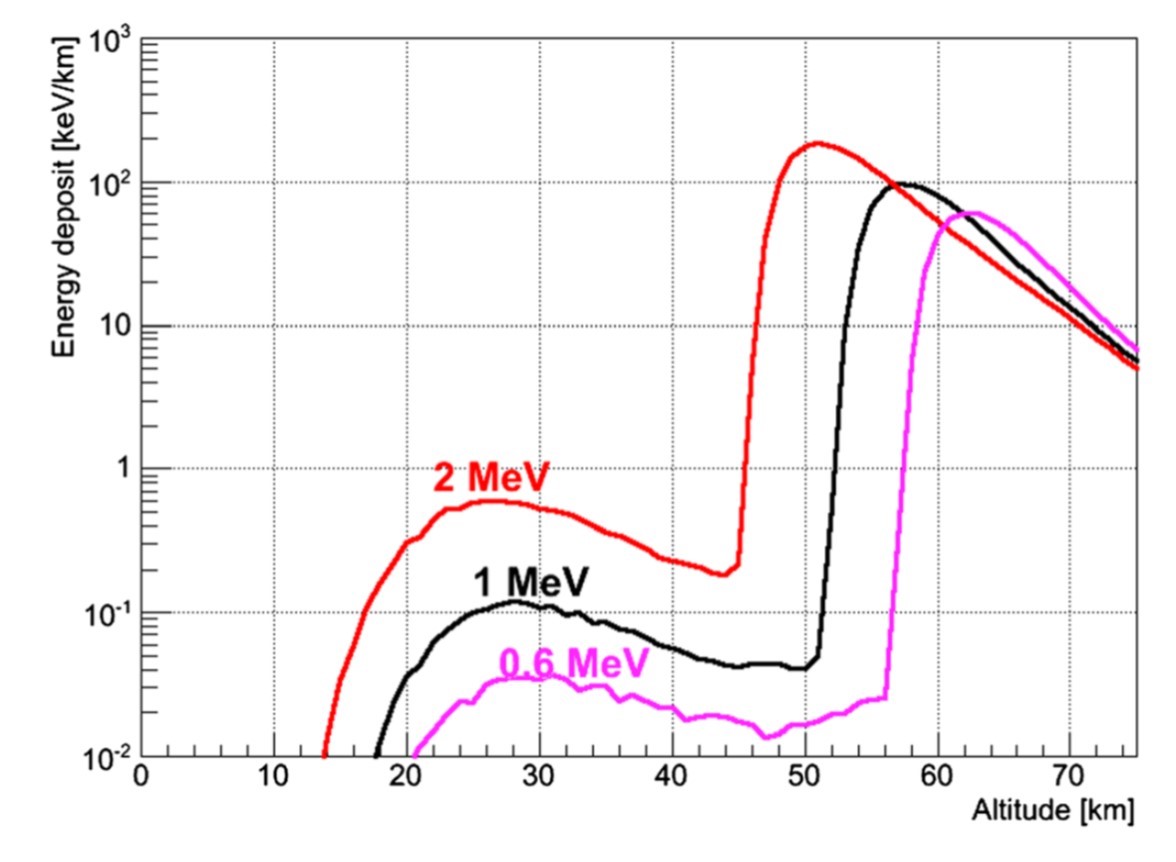Kazuo Shiokawa (Nagoya Univ., ISEE)
A new scenario is presented for the cause of magnetospheric relativistic electron decreases (REDs) and potential effects in the atmosphere and on climate. High-density solar wind heliospheric plasmasheet (HPS) events impinge onto the magnetosphere, compressing it along with remnant noon-sector outer-zone magnetospheric ~10-100 keV protons. The betatron accelerated protons generate coherent electromagnetic ion cyclotron (EMIC) waves through a temperature anisotropy (T⊥/T||>1) instability. The waves in turn interact with relativistic electrons and cause the rapid loss of these particles to a small region of the atmosphere. A peak total energy deposition of ~3 × 10^20 ergs is derived for the precipitating electrons. Maximum energy deposition and creation of electron-ion pairs at 30-50 km and at<30 km altitude are quantified. We focus the readers' attention on the relevance of this present work to two climate change mechanisms. Wilcox et al. (1973) noted a correlation between solar wind heliospheric current sheet (HCS) crossings and high atmospheric vorticity centers at 300 mb altitude. Tinsley et al. (1994) has constructed a global circuit model which depends on particle precipitation into the atmosphere. Other possible scenarios potentially affecting weather/climate change are also discussed.
Tsurutani, B. T., R. Hajra, T. Tanimori, A. Takada, B. Remya, A. J. Mannucci, G. S. Lakhina, J. U. Kozyra, K. Shiokawa, L. C. Lee, E. Echer, R. V. Reddy, and W. D. Gonzalez, Heliospheric Plasma Sheet (HPS) Impingement onto the Magnetosphere as a Cause of Relativistic Electron Dropouts (REDs) via Coherent EMIC Wave Scattering with Possible Consequences for Climate Change Mechanisms, J. Geophys. Res., 121.
DOI: 10.1002/2016JA022499, 2016.
http://onlinelibrary.wiley.com/doi/10.1002/2016JA022499/abstract?campaign=agupersonalchoice
Figure1. A new scenario that high-density solar wind heliospheric plasmasheet (HPS) events impinge onto the magnetosphere, causing magnetospheric EMIC waves that scatters relativistic electrons precipitate into the atmosphere, to impact on the atmosphere and climate.
Figure 2. (top) Solar wind pressure pulse and wave data at (middle) Athabasca, Canada, at 61.7° magnetic latitude, and (bottom) Moshiri, Japan, at 35.6° magnetic latitude. Associated with the solar wind pressure pulse, the electromagnetic ion cyclotron wave is observed at dayside Athabasca at 16-18 UT.
Figure 3. Energy deposition for 0.6, 1, and 2 MeV electrons entering the top of the atmosphere.



